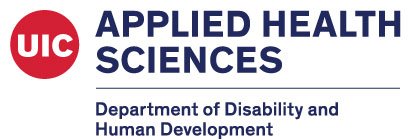Reading is an activity that has been around for thousands of years and is an integral part of our daily lives. For example, children like to have their favorite storybooks read to them by their caregivers, adults read fiction and non-fiction books for pleasure and work, and college students read textbook after textbook because it is a requirement of being a student. Much goes into teaching an individual how to read; just ask your local elementary teacher. However, unless you are a clinical interventionist, you may not know that reading can be used as an intervention tool to help individuals increase proficiency in language skills such as receptive and expressive vocabulary, comprehension, and language growth. Some speech-language pathologists use storybook reading to target specific speech sounds (see Speech Time Fun's Blog). In this blog, we will focus on a specific reading intervention: Reading to Engage Children with Autism in Language and Learning (RECALL).
Dialogic reading is an interactive style of reading in which the adult works to actively engage the child in storybook interaction. This was originally discussed and researched in the 1980s to 1990s by Dr. Whitehurst and colleagues (Arnold et al., 1994; G. J. Whitehurst et al., 1988; Grover J. Whitehurst et al., 1994). A recent systematic review by Towson and colleagues (2021) found that SIBR overall produced positive improvements in language and communication outcomes in the following populations: children with Autism Spectrum Disorder (ASD; Fleury et al., 2014; Fleury & Schwartz, 2017; Whalon et al., 2013, 2015, 2016), children with Intellectual and Developmental Disabilities such as Down syndrome (DS; Quinn et al., 2020), children with Developmental Delay (DD; Towson et al., 2016) and children with speech and/or language impairment (Wilcox et al., 2020).
Dr. Kelly Whalon and colleagues (Whalon et al., 2015) created a modified version of the dialogic reading intervention called Reading to Engage Children with Autism in Language and Learning (RECALL). RECALL incorporates the hallmark features of dialogic reading, including the CROWD (Completion, Recall, Open-ended, Wh-, and Recall) questions and the PEEP (Prompt, Evaluate, Expand, and Praise) sequence. In addition, the novel features of RECALL include adding two additional question types (Wh-Inference and Emotion Identification), initiation bids, joint attention bids, and a prompting hierarchy. The additional questions, bids, and prompting hierarchy were developed to target areas of difficulty for children with ASD.
The prompting hierarchy was developed with a least-to-most prompting strategy in mind for the child with ASD and included answer options with visuals. For example, the least-to-most prompting hierarchy in which the question (e.g., "What is the dog doing?") is initially asked by the interventionist. If the child with ASD gives no response or an incorrect response (e.g., the correct answer is "running"), then three visuals are provided to help aid in answering the question and the question is asked again (e.g., "What is the dog doing?"). The visuals might include a picture or clip art of a dog running, sleeping, or eating. If the child with ASD does not answer the question, the interventionist continues through the prompting hierarchy by removing visuals as they progress through the hierarchy.
RECALL has since been applied to parents (Whalon et al., 2016) and in a randomized control trial (Lo & Shum, 2021). More research is needed to determine at what age and frequency RECALL will be effective for children with ASD. Therefore, if you are an interventionist, I recommend looking into the Lo & Shum, 2021 and Whalon et al., 2013, 2015, 2016 studies to see if RECALL might be an effective intervention method for your caseload. Likewise, if you are a parent, I recommend speaking with your interventionist to see if RECALL might be a possibility for your child with ASD.
By: Rebekah Bosley M.S. CCC-SLP, Speech Language Pathology Trainee, Ph.D. Student in Speech Hearing Science Department at the University of Illinois Urbana-Champaign
References
Arnold, D. H., Lonigan, C. J., Whitehurst, G. J., & Epstein, J. N. (1994). Accelerating Language Development Through Picture Book Reading: Replication and Extension to a Videotape Training Format. Journal of Educational Psychology, 86(2), 235–243. https://doi.org/10.1037/0022-0663.86.2.235
Fleury, V. P., Miramontez, S. H., Hudson, R. F., & Schwartz, I. S. (2014). Promoting active participation in book reading for preschoolers with Autism Spectrum Disorder: A preliminary study. Child Language Teaching and Therapy, 30(3), 273–288. https://doi.org/10.1177/0265659013514069
Fleury, V. P., & Schwartz, I. S. (2017). A Modified Dialogic Reading Intervention for Preschool Children With Autism Spectrum Disorder. Topics in Early Childhood Special Education, 37(1), 16–28. https://doi.org/10.1177/0271121416637597
Lo, J. Y. T., & Shum, K. K. M. (2021). Brief Report: A Randomized Controlled Trial of the Effects of RECALL (Reading to Engage Children with Autism in Language and Learning) for Preschoolers with Autism Spectrum Disorder. Journal of Autism and Developmental Disorders, 51(6), 2146–2154. https://doi.org/10.1007/s10803-020-04692-0
Quinn, E. D., Kaiser, A. P., & Ledford, J. R. (2020). Teaching preschoolers with down syndrome using augmentative and alternative communication modeling during small group dialogic reading. American Journal of Speech-Language Pathology, 29(1), 80–100. https://doi.org/10.1044/2019_AJSLP-19-0017
Towson, J. A., Gallagher, P. A., & Bingham, G. E. (2016). Dialogic Reading: Language and Preliteracy Outcomes for Young Children With Disabilities. Journal of Early Intervention, 38(4), 230–246. https://doi.org/10.1177/1053815116668643
Whalon, K., Delano, M., & Hanline, M. F. (2013). A Rationale and Strategy for Adapting Dialogic Reading for Children With Autism Spectrum Disorder: RECALL. Preventing School Failure: Alternative Education for Children and Youth, 57(2), 93–101. https://doi.org/10.1080/1045988x.2012.672347
Whalon, K., Hanline, M. F., & Davis, J. (2016). Parent Implementation of RECALL : A Systematic Case Study. Division on Autism and Developmental Disabilities, 51(2), 211–220.
Whalon, K., Martinez, J. R., Shannon, D., Butcher, C., & Hanline, M. F. (2015). The Impact of Reading to Engage Children With Autism in Language and Learning (RECALL). Topics in Early Childhood Special Education, 35(2), 102–115. https://doi.org/10.1177/0271121414565515
Whitehurst, G. J., Falco, F. L., Lonigan, C. J., Fischel, J. E., & et al. (1988). Accelerating language development through picture book reading. Developmental Psychology, 24(4), 552–559. https://doi.org/10.1037//0012-1649.24.4.552
Whitehurst, Grover J., Arnold, D. S., Epstein, J. N., Angell, A. L., Smith, M., & Fischel, J. E. (1994). A Picture Book Reading Intervention in Day Care and Home for Children From Low-Income Families. Developmental Psychology, 30(5), 679–689. https://doi.org/10.1037/0012-1649.30.5.679
Wilcox, M. J., Gray, S., & Reiser, M. (2020). Preschoolers with developmental speech and/or language impairment: Efficacy of the Teaching Early Literacy and Language (TELL) curriculum. Early Childhood Research Quarterly, 51, 124–143. https://doi.org/10.1016/j.ecresq.2019.10.005











